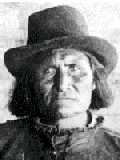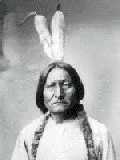Introduction
Native American -- Indigenous people who inhabited the Americas and Caribbean prior to the European infiltration.
The same definition could be applied to other terms as well. There is a debate as to whether the term Indian, American Indian, or Native American is preferable. Many Native Americans use Indian or tribe in referring to their people. Others suggest that these and similar words are incorrect and carry derogatory connotations. The only places the word tribe occurs on this website is in the domain name of Native American links such as http://www.lumbeetribe.com and http://www.winnebagotribe.com.
I have found that Native American is not preferred by some, and Indian is not preferred by some as well. If all terms that are not preferred by some are not used, there are no choices left. For this reason, whenever you see any term used that you would not have used, it was not my intent to offend. Please choose the term you would have preferred and continue reading. If you have further questions, please refer to the website Terms and Conditions.
"(You notice I use the term American Indian rather than Native American or Native indigenous people or Amerindian when referring to my people. There has been some controversy about such terms, and frankly, at this point. I find it absurd. Primarily it seems that American Indian is being rejected as European in origin-which is true. But all the above terms are European in origin; the only non-European way is to speak of Lakota-or, more precisely, of Oglala, Brule, etc.-and of the Dineh, the Miccousukee, and all the rest of the several hundred correct tribal names.)"
"(There is also some confusion about the word Indian, a mistaken belief that it refers somehow to the country, India. When Columbus washed up on the beach in the Caribbean, he was not looking for a country called India. Europeans were calling that country Hindustan in 1492. Look it up on the old maps. Columbus called the tribal people he met "Indio," from the Italian in dio, meaning "in God.")"
"The one thing I've always maintained is that I'm an American Indian. I'm not politically correct. Everyone who's born in the Western Hemisphere is a Native American. We are all Native Americans."
Modern Times
Sadly, natives are still treated as third class citizens, never really fitting into the majority's society. In some ways, the reservations are a prison, and in other ways, they are a privilege that doesn't have to follow the same rules and restrictions of the rest of society. Native Americans were the first to have casinos regardless of the rest of the state's laws. The Casino's have brought revenue and jobs to a society that wasn't about to get it by any other means. New schools on reservations are proof of a society striving to compete with the rest of the world.
Pow-Wows 
North American Natives continue to celebrate their heritage with Pow-Wows throughout the country. In Nebraska, we are lucky to have a Native American population proud of their culture and history. During the summer months, there is a Pow-Wow nearly every week or so somewhere in the state.
In Omaha, we have a Pow Wow at the Metropolitan Community College North Campus at 30th and Fort Street at the end of the summer that is bound to please the curious to repeat visitor. Expect to see dancers dressed in an array of bright colorful traditional regalia, arts and crafts, and ethnic Native American food. Uhmmm good.
Pow-wows are special events that not only involve celebration, but also pays respect to Native American heritage. Pow-wows have a code of ethics that you should make sure you adhere to. Photography, Videotaping, and sound recordings can only be done by permission. The arena area is a sacred area and it should be respected. Do not enter the arena, unless it is for a dance that anyone can dance in (usually referred to as an Intertribal Dance). Make sure you ask the event MC for any specifics. See the links at the side for more details.
Nebraska Reservations 
Nebraska has four reservations inside the state and one on the state border.
Omaha Reservation, Macy, Nebraska in N.E. Nebraska is on the border next to the Missouri River. The reservation borders the Winnebago Reservation to its north. Pop: 2500
Winnebago Reservation, Winnebago, Nebraska in N.E. Nebraska is on the border next to the Missouri River. The reservation borders the Omaha Reservation to its south. Pop: 1200, 27,000 acres. Website.
Santee Sioux Reservation, Niobrara, Nebraska is on the Nebraska South Dakota border in N.E. Nebraska. The border between the states is actually Lewis and Clark Lake. The Santee Reservation is attached at the western end of Lewis and Clark Lake. If you like Native American art, you will find the hidden bargains of the U.S. here. Stop and ask for info if it isn't obvious. Do you know why the Santee Natives were there first? Pop: 600, 18,000 acres.
Fox-Sac Reservation is located at the southeastern tip of Nebraska.
Our northern neighbor state (South Dakota) has three reservations on its southern border. People living on the southern edge often cross over into Nebraska. Those reservations are 1) the Pine Ridge Reservation in southwestern South Dakota, near Chadron, Nebraska, 2) Yankton reservation on the northern shore of Lewis and Clark Lake, and 3) Rosebud Reservation just north of Valentine, Nebraska. Rosebud covers over 1,000,000 acres and is divided into three sections to allow three different branches of Sioux to live in their own sections. Lakota, Dakota, and Nakota are the three languages used. There are several attractions on and around the reservation. The Buechel Memorial Lakota Museum should not be missed.
South Dakota also has six other reservations; just south of Pierre, there is the Crow Creek and Lower Brule Reservation. North of Lake Pierre is the Cheyenne River Reservation, and joining its north side is the Standing Rock Reservation, which extends into North Dakota. The Sisseton-Wahpeton Sioux Reservation is in South Dakota's northeast corner. The smallest is the Flandreau Reservation north of Sioux Falls on the Big Sioux River.
Continue Reading 
Native History
Coronado's Attack on the Natives
Sacagawea and the Lewis & Clark Expedition
Pawnee War of 1859
Native Nations
Omaha Nation

Reservations
Flandreau
Reference 1
Sisseton-Wahpeton Sioux
Reference 1
Standing Rock
Reference 1
Crow Creek
General
FEMA Tribal Definition








